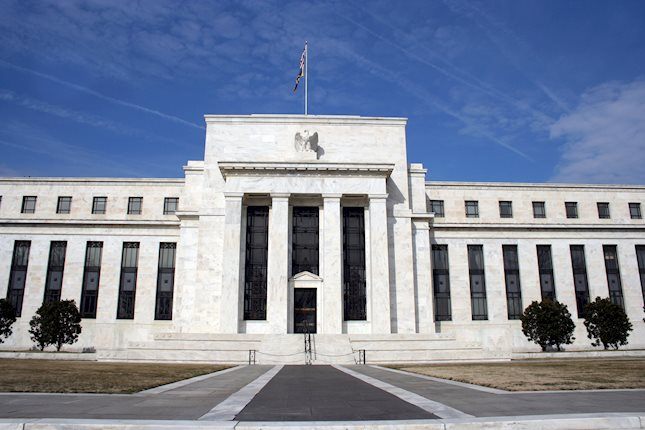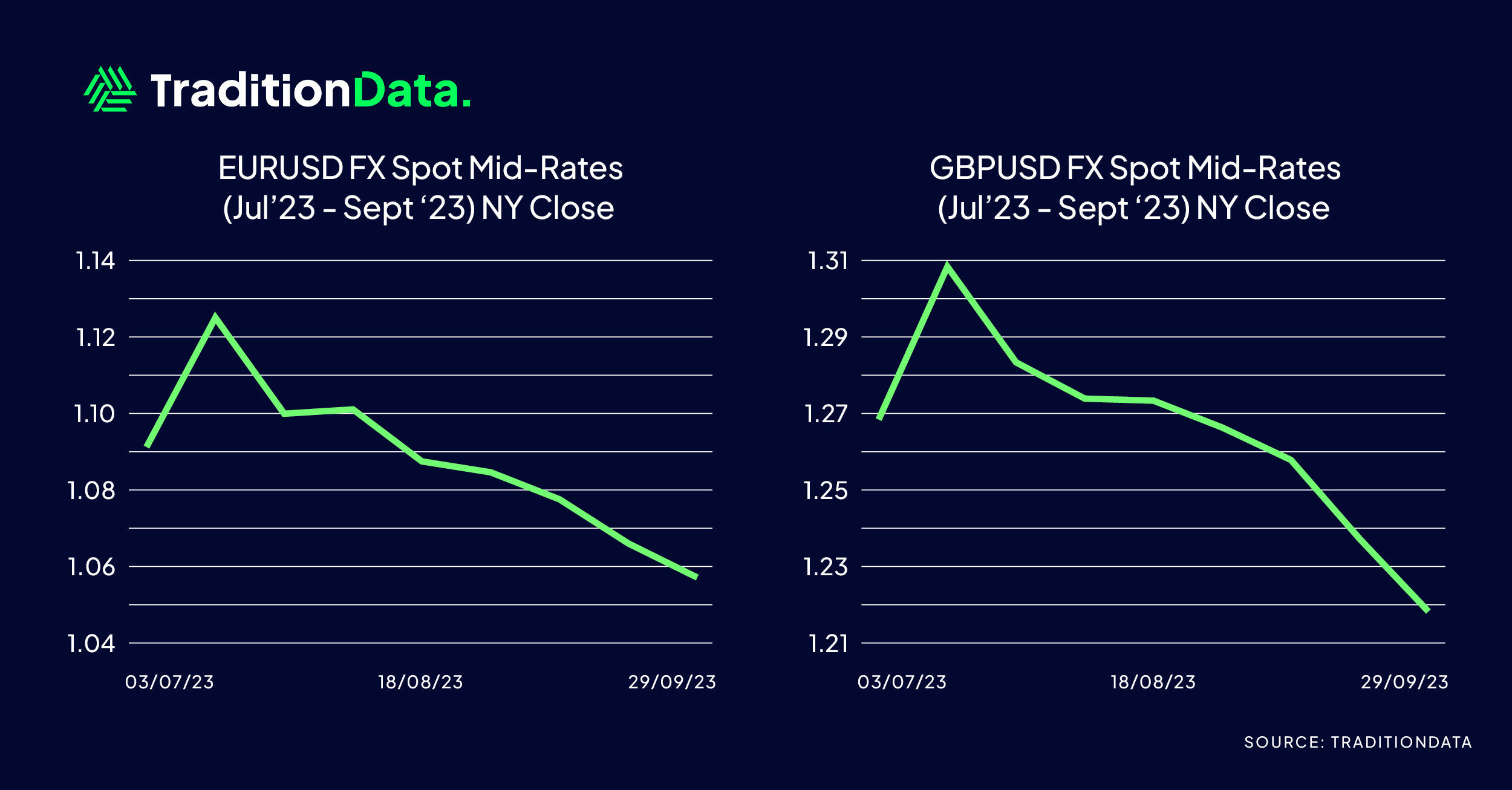The focus of this month’s article will be on the US economy. One of the first major data points contributing to the November 1st rate decision by the Federal Reserve, will be the US unemployment report, set to be released this Friday, Oct. 6th. The market expectations is for the September unemployment rate to come in at 3.7%, down from 3.8%, in August, while Non-Farm Payrolls are expecting to be in the 150,000 – 170,000 range, representing a slight reduction from August’s 187,000.
Earlier this year, as the US continued its rate hike policy to combat inflation pressures, the big concern with this vigilant approach to rate hikes, was an eventual recession resulting in a “harder landing”. The market consensus began shifting to a “softer landing” in Q2, as the effectiveness of the rate hikes were showing reduced inflation data, supporting this sentiment. Now, with recent developments around energy prices rising, the UAW strike (which got resolved last week), a last minute agreement to avoid a government shutdown, while longer term Treasury yields have been on the rise (specifically 10-year US Treasury Yields reaching the highest levels since 2007 as of this writing), we are witnessing a lot more uncertainty in the direction of the US economy. This has resulted in a methodical decline in the US equity markets over the past 2 months. The Fed’s current monetary policy campaign, of tightening financial conditions, is still working its way through the US economy. The consumer spending data points need to show signs of slowing down, before the Fed will start shifting gears away from the its current stance. With the pending November policy meeting, there is a divided opinion on whether the Fed will resume rate hikes or suggest that they’re done with this current policy. The recent comments from the Fed, about a prolonged period of rates remain at current levels, has also negatively weighed on equities, while also seeing US Dollar appreciation.
As we’ve witnessed throughout 2023, economic conditions that global economies are experiencing, are dramatically different, from fighting inflation to stagflation/recession. Regarding economic slowdowns, the central banks of the Eurozone (ECB) and the UK (Bank of England) are a few months ahead of the US economy, in terms of the shifting focus from fighting inflation to an economic slowdown. The rate hike monetary policies of both the ECB and Bank of England, with an overall bias to tightening monetary policy, is now showing its impact on business and consumers. With higher financing costs, we’re seeing slowdowns in the housing markets and overall consumer spending.
The US Dollar appreciation over the past 3-month period (July – Sept) against the Eurodollar (EUR) and the British Pound (GBP), is reflected in the charts below. This illustrates the impact that a prolonged Fed policy of keeping US rates elevated, at current levels, compared to the Eurozone and UK economies. These regions have entered economic slowdowns, which implies an ECB and Bank of England shift of monetary policies, to rate reductions, are imminent. In conclusion, as is always the case during these shifting tides, each of the global central banks will rely on the economic data to determine their next policy decision.
At TraditionData, we pride ourselves on our global footprint with local market expertise through our relationship with Tradition’s experienced broking business. We offer extensive coverage across Dollar, GBP and Euro-based products covering, FX spot/forwards, interest rate derivatives and inflation markets. Get in touch to find out how our OTC market data products can power your business, trading and risk decisions.
The information contained herein is the property of Compagnie Financière Tradition S.A. or any of its subsidiaries (together “Tradition”). Any review, disclosure, dissemination, distribution or copying of the information, whether in full or in part, is strictly prohibited and only intended for confidential use by the designated recipient(s). All content is provided “as is”, without warranty of any kind, either express or implied, including without limitation, warranties of merchantability, fitness for a particular purpose, and non-infringement. Nothing herein constitutes investment advice or an offer, or solicitation of an offer to buy or sell any financial product. Any data consists of purely indicative prices and should not be relied upon to revalue any commercial positions held by any recipient. To the maximum extent of the law, Tradition specifically does not make any warranties or representations as to the appropriateness, quality, timeliness, accuracy or completeness of the information and shall not be liable for any inaccuracy, error, omission, interruption, timeliness, incompleteness, deletion, defect, failure of performance, alteration or use of any of the content displayed, regardless of cause, or for any damages resulting therefrom. Tradition services are not available to private or retail clients. This information is not intended for distribution to, or use by any person or entity in any jurisdiction or country where such distribution or use would be contrary to any applicable law or regulation. Copyright © Compagnie Financière Tradition S.A., 2023. Commercial in Confidence.
Recommended Content
Editors’ Picks

EUR/USD stabilizes near 1.0500 ahead of Fed rate call
EUR/USD fluctuates in a narrow range at around 1.0500 in on Wednesday. The pair's further upside remains capped as traders stay cautious and refrain from placing fresh bets ahead of the Federal Reserve's highly-anticipated policy announcements.

GBP/USD holds above 1.2700 after UK inflation data
GBP/USD enters a consolidation phase above 1.2700 following the earlier decline. The data from the UK showed that the annual CPI inflation rose to 2.6% in November from 2.3%, as expected. Investors gear up for the Fed's monetary policy decisions.

Gold stays at around $2,650, upside remains limited with all eyes on Fed
Gold is practically flat near $2,650 on Wednesday after bouncing up from a one-week low it set on Tuesday. The precious metal remains on the defensive as the market braces for the outcome of the last Federal Reserve’s (Fed) meeting of the year.

Federal Reserve set for hawkish interest-rate cut as traders dial back chances of additional easing in 2025
The Federal Reserve is widely expected to lower the policy rate by 25 bps at the last meeting of 2024. Fed Chairman Powell’s remarks and the revised dot plot could provide important clues about the interest-rate outlook.

Sticky UK services inflation to come lower in 2025
Services inflation is stuck at 5% and will stay around there for the next few months. But further progress, helped by more benign annual rises in index-linked prices in April, should see ‘core services’ inflation fall materially in the spring.

Best Forex Brokers with Low Spreads
VERIFIED Low spreads are crucial for reducing trading costs. Explore top Forex brokers offering competitive spreads and high leverage. Compare options for EUR/USD, GBP/USD, USD/JPY, and Gold.
